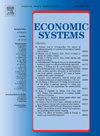Labor migration, economic growth, and welfare inequality: A quantitative analysis of China
IF 3.3
2区 经济学
Q1 ECONOMICS
引用次数: 0
Abstract
This study examines how differing migration restrictions for labor with heterogeneous skills affect economic development and welfare inequality in China. Combining micro individual data with a general equilibrium model that includes skilled and unskilled workers, endogenous productivity, and housing supply, we quantify the differing migration costs for skilled and unskilled workers and its consequences. The findings reveal that unskilled workers’ interprovincial migration cost is much higher than that of skilled workers, resulting in a 1.286 % output loss and widening economic disparity by 3.996 %, causing the interprovincial income gap to expand by 5.929 % and expanding the income gap between skilled and unskilled workers by 0.059 %. Regarding skill heterogeneity, facilitating the smooth interprovincial migration of unskilled workers can produce more significant and positive output and welfare effects compared with skilled workers. Across China’s regions, rationalizing the proportion of skilled and unskilled workers and improving the complementarity between skilled and unskilled workers would help optimize the spatial allocation of workers and enhance the output and welfare effects of labor migration. Therefore, eliminating the exclusion of unskilled workers and guiding the rational and orderly migration of skilled and unskilled workers will promote output growth, narrow the economic gap, and improve workers’ welfare, narrowing the welfare gap and establishing a mutually beneficial outcome of efficiency and fairness.
劳动力迁移、经济增长与福利不平等:中国的定量分析
本研究探讨了不同的移民限制对中国经济发展和福利不平等的影响。结合微观个体数据和一般均衡模型(包括熟练工人和非熟练工人、内生生产率和住房供应),我们量化了熟练工人和非熟练工人的不同迁移成本及其后果。研究发现,非技术工人的省际迁移成本远高于技术工人,导致产出损失1.286 %,经济差距扩大3.996 %,导致省际收入差距扩大5.929 %,技术工人与非技术工人的收入差距扩大0.059 %。在技能异质性方面,促进非熟练工人的顺利跨省迁移比技术工人产生更显著、更积极的产出和福利效应。在中国各地区,理顺熟练工人和非熟练工人的比例,提高熟练工人和非熟练工人之间的互补性,有利于优化劳动力的空间配置,增强劳动力迁移的产出和福利效应。因此,消除对非熟练工人的排斥,引导熟练工人和非熟练工人的合理有序迁移,将促进产出增长,缩小经济差距,提高工人福利,缩小福利差距,建立效率与公平互利的结果。
本文章由计算机程序翻译,如有差异,请以英文原文为准。
求助全文
约1分钟内获得全文
求助全文
来源期刊

Economic Systems
ECONOMICS-
CiteScore
4.90
自引率
0.00%
发文量
83
审稿时长
48 days
期刊介绍:
Economic Systems is a refereed journal for the analysis of causes and consequences of the significant institutional variety prevailing among developed, developing, and emerging economies, as well as attempts at and proposals for their reform. The journal is open to micro and macro contributions, theoretical as well as empirical, the latter to analyze related topics against the background of country or region-specific experiences. In this respect, Economic Systems retains its long standing interest in the emerging economies of Central and Eastern Europe and other former transition economies, but also encourages contributions that cover any part of the world, including Asia, Latin America, the Middle East, or Africa.
 求助内容:
求助内容: 应助结果提醒方式:
应助结果提醒方式:


